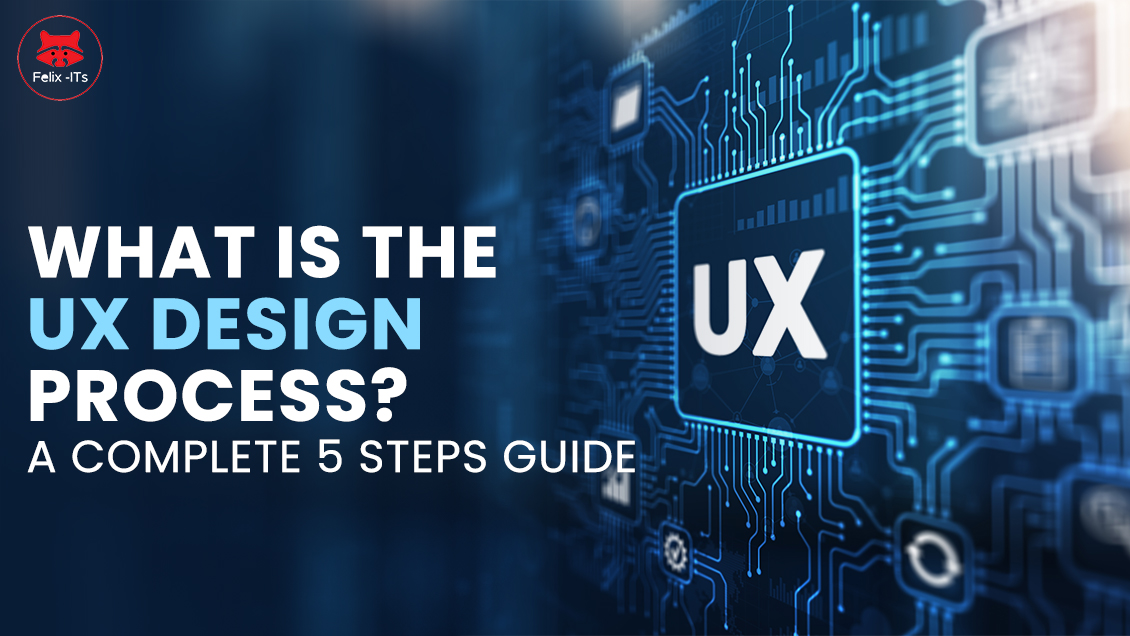Design thinking is a problem-solving approach that emphasizes empathy, ideation, and prototyping to create innovative solutions. It matches UX design by focusing on what users want and how they feel. The process includes steps such as understanding users, identifying issues, coming up with solutions, making prototypes, and testing. Both approaches aim to know users well, quickly improve ideas, and create products or services that make users happy. In this article, we will discuss the process of UX design, by breaking it down into simple 5 steps.
What is UX Design?
UX design, short for User Experience design. It focuses on crafting products or systems that are intuitive, efficient, and delightful for users to interact with. It involves understanding user needs, behaviors, and motivations to create interfaces and experiences that meet those requirements. UX designers employ research, wireframing, prototyping, and testing to ensure usability and satisfaction. Ultimately, UX design aims to enhance user satisfaction by improving the accessibility, usability, and pleasure provided in the interaction between the user and the product or system.
Importance of UX Design
As we know UX design is all about creating products and services that are efficient for people to use. It focuses on understanding the users’ needs and goals and then designing interfaces and interactions that meet those needs clearly and intuitively.
Here’s why UX design is important:
- Increased User Satisfaction and Loyalty: If the user has a positive experience with the product, they will be satisfied. This means long-term use of the product with increased customer loyalty.
- Improved Business Metrics: Good UX design can lead to better business outcomes in a number of ways. For example, it can increase conversion rates on websites, and improve customer satisfaction ratings. This clearly means better UX design equals better ROI.
- Accessibility and Inclusivity: UX design also takes into account the needs of users with disabilities. This focuses on making the product or service suitable for a wider range of audience.
- Efficiency and Productivity: Well-designed products can help users complete tasks more quickly and easily. This can save them time and frustration, and make them more productive.
In short, UX design is important because it puts the user at the center of the design process. By focusing on creating a positive user experience, you can create products that are not only successful but also enjoyable to use.
5 Steps UX Design Process
The UX design process is all about creating user-friendly products. It’s a cyclical method with five main phases that can loop back and forth as needed. Here’s a breakdown of the 5 steps:
1. Empathize: Research Your Users’ Needs
In the first step of UX design, empathize. The focus is on understanding the users’ needs, desires, and limitations. This involves conducting thorough research to gain insights into users’ behaviors, preferences, and pain points. Techniques like user interviews, surveys, and observation help in gathering valuable data.
For instance, if designing a fitness app, empathizing would entail understanding users’ fitness goals, their exercise routines, and the challenges they face in staying motivated. Through empathy, designers can uncover opportunities to create features that address these needs effectively.
Empathizing sets the foundation for user-centered design by ensuring that the final product resonates with the target audience. Leading to higher user satisfaction and engagement. Such important steps are often covered under the UI UX course in Pune for the students.
2. Define: State Your Users’ Needs and Problems
In the “Define” step of UX design, you pinpoint the needs and problems of your users by gathering data from various sources. Such as interviews, surveys, and analytics. This stage helps in understanding the user’s goals, behaviors, and pain points. For instance, if you’re designing a mobile app for budget management, you might discover through user research that people struggle with tracking expenses on the go. By defining this problem clearly, you can tailor your design to address it effectively. Creating user personas and journey maps can be useful tools to organize and visualize your findings.
3. Ideate: Challenge Assumptions and Create Ideas
The ideate step of the UX design process takes the design journey a bit further. It’s about breaking free from assumptions and generating a multitude of ideas. Here, diverse perspectives are embraced to explore solutions to the user’s needs and pain points.
At this point of the UX design process, different viewpoints to find solutions for what users need are focused. Imagine you’re designing a fitness app. During ideation, you might brainstorm features like personalized workout routines, progress tracking, or social integration for motivation. Encourage wild ideas; sometimes, the most unconventional ones lead to breakthroughs. Techniques like brainstorming sessions, mind mapping, or sketching help in this phase.
For instance, the idea of integrating virtual reality workouts might emerge, challenging the assumption that users prefer traditional gym environments.
4. Prototype: Build Rough Models to Test
In the UX design process, the fourth step is prototyping. It involves creating rough models of your design ideas to test their functionality and gather feedback before investing further resources. This step bridges the gap between ideation and implementation. Prototypes can range from simple sketches to interactive digital mockups.
For example, let’s say you’re designing a new mobile app for a recipe-sharing platform. In the prototyping stage, you might create wireframes depicting the app’s layout and basic functionality. Then, you could develop a clickable prototype using software like Adobe XD or Figma, allowing users to navigate through the app and interact with key features.
By testing prototypes with real users, you can identify potential issues early on. This will help you make necessary adjustments, saving time and resources in the long run. Prototyping makes it easier to improve a product, resulting in a better final version that’s easier for users to use and more effective.
5. Test: Gather Feedback and Iterate
The fifth step in the UX design process is testing. A crucial phase where designs meet reality. It involves putting prototypes or products in front of real users to gather feedback. Testing helps identify usability issues, understand user behavior, and validate design decisions. By watching how users use the product, designers can make it work better and be easier to use. The UI UX course in Pune will also cover this important and last phase of the UX design process.
Final Thoughts
Remember, UX design isn’t a straight line. You might go back to earlier stages as you gather insights from testing and user feedback. This loop lets you constantly enhance your design, making sure it serves your users well.
Being a UX designer is a great career option, and these steps will help you become one. Moreover, the UI UX course in Pune will be a perfect option to kickstart the journey into this field. Felix-IT Systems is a leading institute offering the best UI UX course in Pune with a comprehensive curriculum. The expert faculties also ensure the students receive the best learning experience with the UI UX course in Pune.
Enroll in the UI UX course in Pune by Felix-IT Systems for a great career journey ahead!


